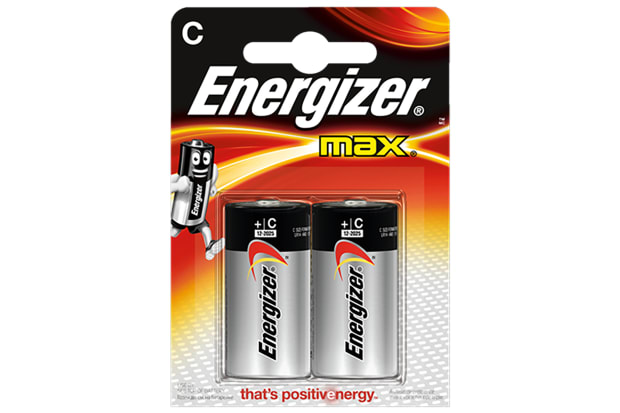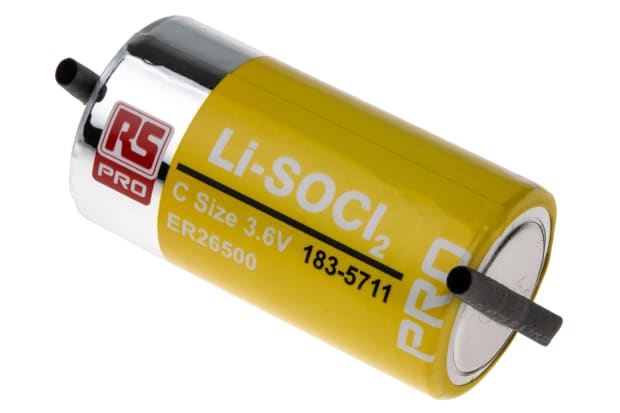- Published 30 Jan 2023
- Last Modified 29 Aug 2023
- 7 min
A Complete C Battery Guide
In our guide, discover all you need to know about C batteries, the different types, and how they can be used.

Reviewed by Jay Proctor, Technical Support Engineer (January 2021)
What are C Batteries?
C batteries are a widely used type of dry cell battery. Dry cells were created to operate with minimal internal moisture, making these batteries ideal for portable devices.
The most familiar dry cell battery sizes are AA and AAA, however, these are smaller than size C batteries which means that they have a more limited lifespan.
C batteries provide a reliable and long-lasting charge for devices with medium-to-high power consumption needs.
This includes:
- Torches
- Cameras
- Radios
- Intruder alarms
- Musical instruments
- Walkie-talkies
- Toys
C batteries are also known as R14s or C LR14 batteries, after their designation by the International Electrotechnical Commission (IEC), a prominent electrical standards body.
C Batteries Size
Although it is possible for C-cell batteries to have different capacities and voltages, the physical size remains the same. C type batteries are built to a standard size to ensure maximum compatibility with both devices and accessories such as battery holders.
C-sized batteries are smaller than D batteries but larger than AA and AAA batteries. They are:
- 50mm or 1.97 inches in length
- 26.2mm or 1.03 inches in diameter
Popular Brands
Duracell C Batteries
Shop Duracell C-size batteries with RS and make your purchase online today.
Varta C Batteries
Choose Varta C batteries for a range of pack sizes suitable for your requirements. Shop now.
Energizer C Battery
Shop high-quality C batteries from leading brand Energizer. Click through to browse the full range.
RS Pro C Batteries
Shop our range of C batteries available from RS Pro, our own in-house brand.
C Batteries by Chemical
C batteries are differentiated not only by their capacity and Voltage but also by the key materials used in their construction.
Lithium and alkaline batteries are common types, as explored in the following sections:
Alkaline C Battery
An alkaline C battery is based around an alkaline electrolyte (anti-acidic electrically-conducting blend) of potassium hydroxide. Thanks to their energy density and long shelf life, alkaline C batteries are one of the most widely used types of batteries. They are commonly found in a range of everyday household items.
Lithium C Batteries
Lithium C batteries utilise the metallic element lithium as the central anode (central conductor). They are noted for their long lives, but they are distinct from the rechargeable lithium-ion battery typically included in portable electronic devices such as smartphones and laptops. The latter derive their charge from the movement of lithium ions.
C Battery Voltage
Batteries are distinguished by their Voltage - the strength of their electrical charge. Each battery is labelled with a nominal Voltage which defines the battery capacity in ideal conditions. In practice, though, the voltage discharge rate varies according to the conditions in which it is operating.
The key nominal C battery volts for consumer-level non-rechargeable batteries are as follows:
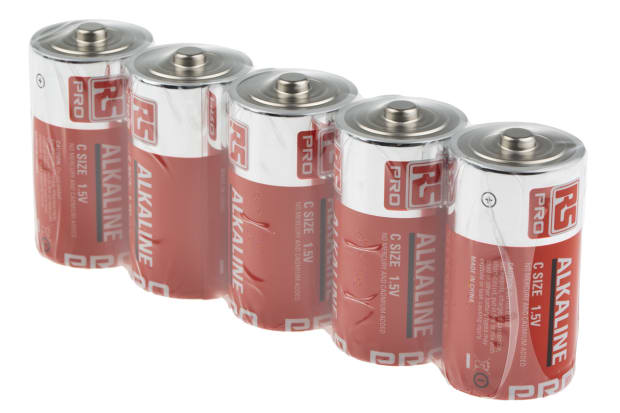
1.5 Volt C Battery
1.5 Volt C batteries are standard, non-rechargeable batteries that are typically used in everyday household items.
Typical Applications:
- Remote controls
- Clocks
- Radios
- Toys
- Torches

3V C Batteries
3V C batteries are primarily used for professional, moderate drain applications rather than everyday household purposes.
Typical Applications:
- Smart gas meters
- Gas and leak detectors
- Oil tank level monitoring
- Petrochemical facilities
- Mining applications
- Shop 3V C Batteries
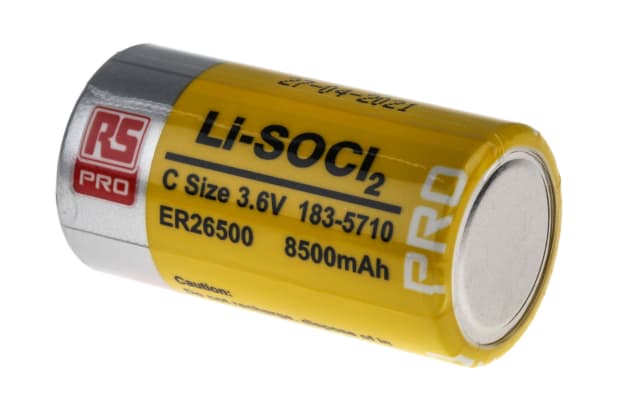
3.6V C batteries
Typically, 3.6V C batteries are used solely for professional or industrial applications.
Typical Applications:
- Utility meters and automatic meter readers
- Buoys
- Measuring Equipment
- Professional Electronics
- Industrial Applications
Rechargeable C Batteries
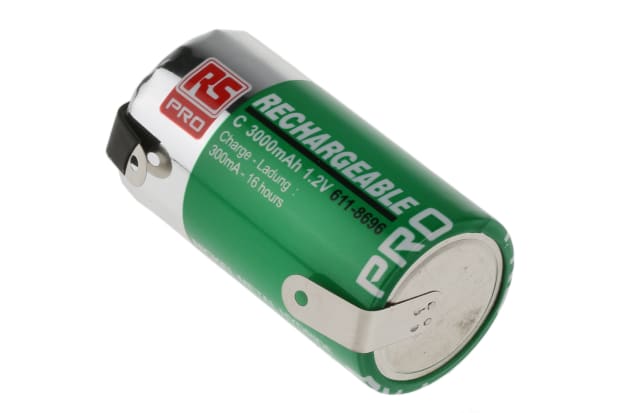
There are two principal types of C battery – standard (non-rechargeable) and rechargeable. Both C battery types have strengths and weaknesses when compared to each other, so it’s important to fully understand the differences and select the best types of C batteries for your specific application.
Rechargeable C batteries can be recharged hundreds of times, making them a truly sustainable choice. Some rechargeable batteries are built into the device that they power while removable models require a separate adapter or size C battery charger for the charging process. They may or may not arrive pre-charged.
Various battery chargers for C batteries are available. They offer different features and options including chemical compatibility and the number of batteries that can be charged simultaneously, as well as varying dimensions and plug types.
Common types of rechargeable C batteries include:
• NiMH (nickel-metal hydride)
• NiCd (nickel-cadmium, also known as NiCad or Ni-Cads)
• Li-ion (lithium iron)
FAQs
What are the Best C Batteries?
The best C batteries will ultimately depend on your specific requirements. However, you should always make sure to choose high-quality batteries from a reputable manufacturer for long-lasting power in both standard and high-drain applications.
Can You Charge Non-Rechargeable Batteries?
No. Non-rechargeable batteries are simply not designed to be charged and attempting to do so could lead to ruptures, overheating and even explosions. Standard batteries cannot store excess electrons because they have no means to do so; once all the stored electrons have been depleted, the battery becomes inert. By contrast, rechargeable batteries do contain chemicals that can store excess electrons and these reservoirs are filled by the battery pack during the charging process.
Can You Recycle C Batteries?
C batteries can be recycled alongside other standard battery sizes. In some parts of the UK, local authorities accept batteries in standard refuse collection services. In others, you will need to take the used batteries to a recycling centre or collection point to ensure proper disposal. Old batteries are broken down into constituent components for reuse.
How Long Do C Batteries Last?
The lifespan of a C battery depends on the specific model and size, as well as the power consumption of the device where it is being used. On average, a standard 1.5V LR14 battery should last more than 18 hours when discharged at a rate of 200mA (milliamps). Milliamps are 1.000th of an amp, the basic unit of electrical current.
Rechargeable size C batteries typically have a capacity of between 2200 and 4500 mAh (milliamp hours). The latter is sufficient to power a strong torch for over six hours.
Why Do Rechargeable and Non-Rechargeable C Batteries Have Different Voltages?
Standard rechargeable and non-rechargeable C batteries typically have different voltages due to differences in their chemical compositions and electrochemical reactions.
Non-rechargeable C batteries are designed to provide constant voltage output over their lifespan. They typically have a nominal voltage of 1.5 Volts. This is because the chemical reaction they use to produce electrical energy generates a relatively stable voltage output until the chemicals are depleted.
On the other hand, standard rechargeable C batteries have a nominal voltage of 1.2 Volts. They have a different chemical composition and electrochemical reaction than non-rechargeable batteries. Rechargeable batteries decrease their voltage output as they discharge, starting at around 1.4 Volts and declining to 1.2 Volts.
The lower voltage of rechargeable C batteries is primarily due to the materials used and the electrochemical processes involved. The specific chemistry and construction of rechargeable batteries make them capable of being recharged multiple times. However, they have a slightly lower voltage output than non-rechargeable batteries.
It's also worth noting that the voltage difference between rechargeable and non-rechargeable C batteries is generally not a problem when used in devices designed for C batteries.
Shop C Batteries
Non-Rechargeable C Batteries
With a range of brands and pack sizes available, click through to browse our full range of non-rechargeable C batteries.
Rechargeable C Batteries
Choose from a range of chemistries and capacities to select the most suitable rechargeable C battery for your requirements. Shop online with RS.


